Downloaded 43 times

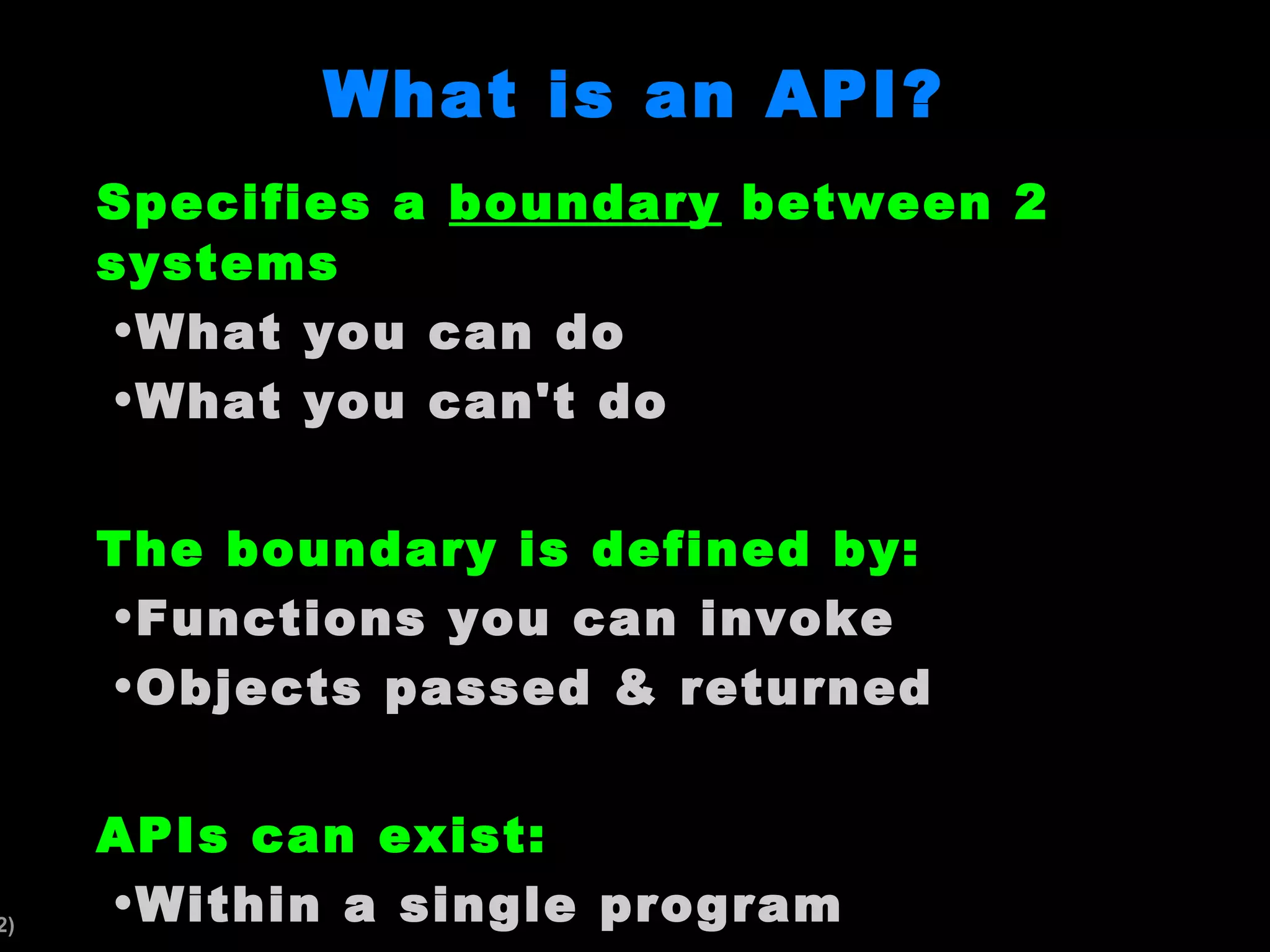
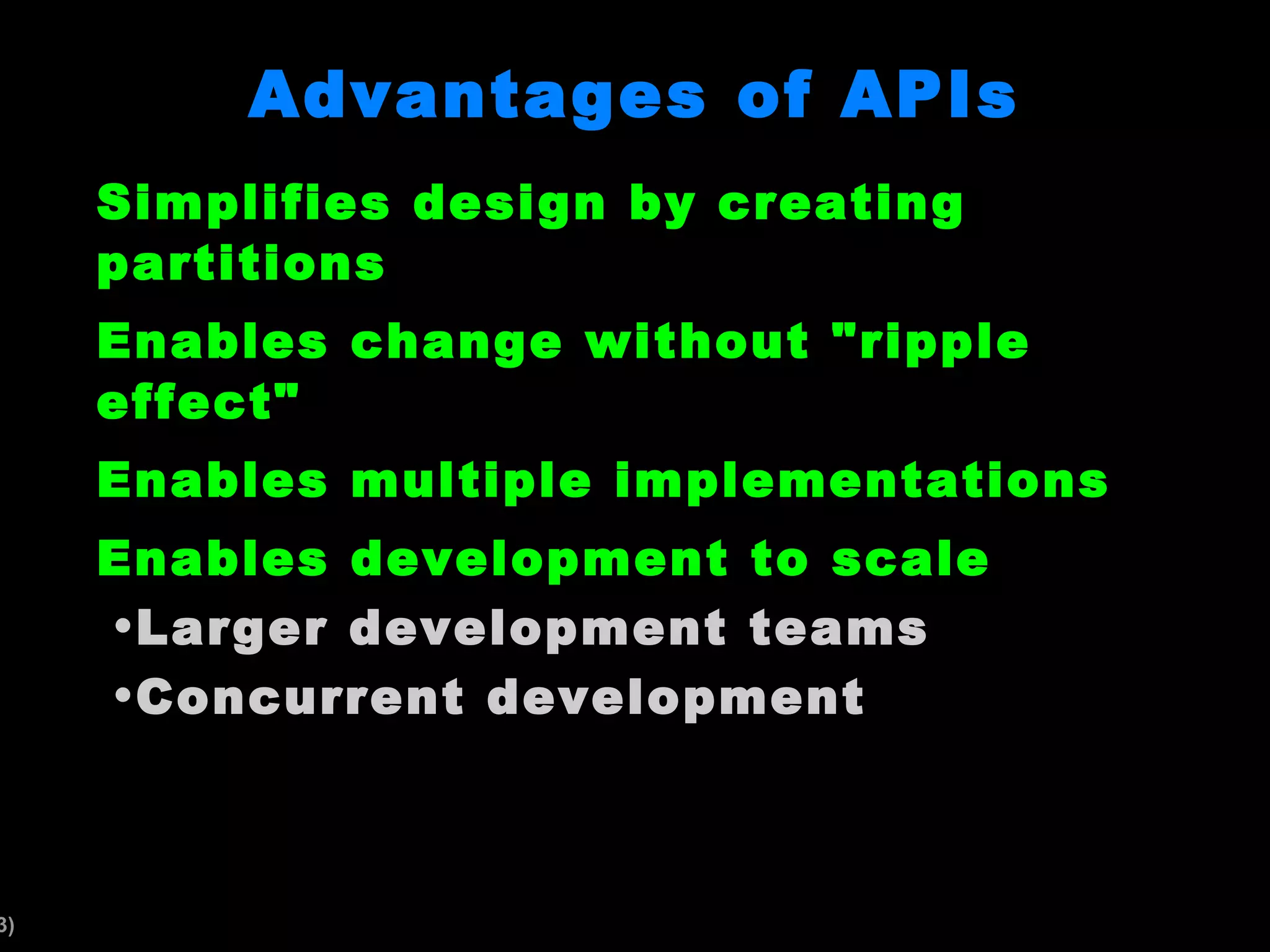
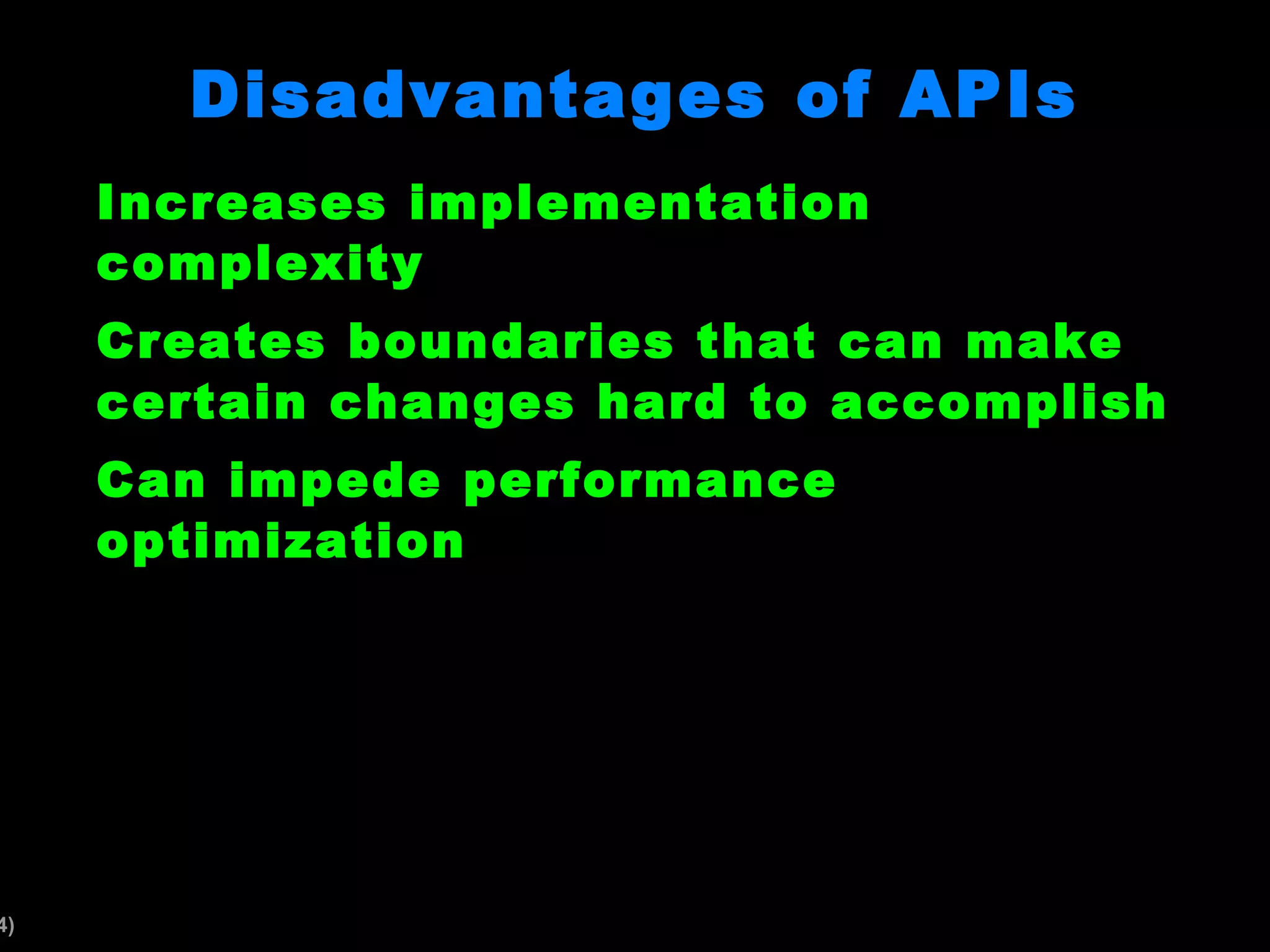
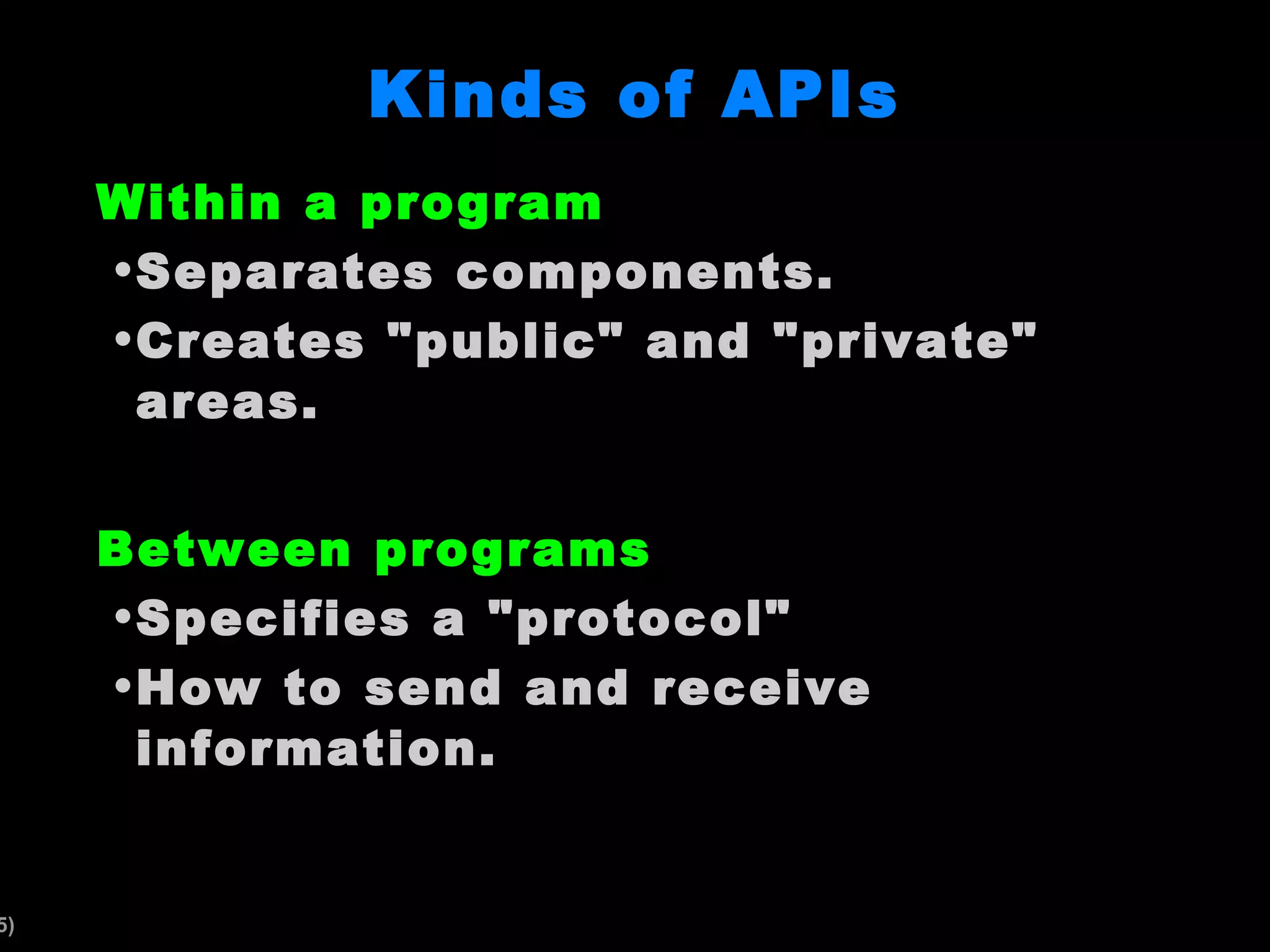
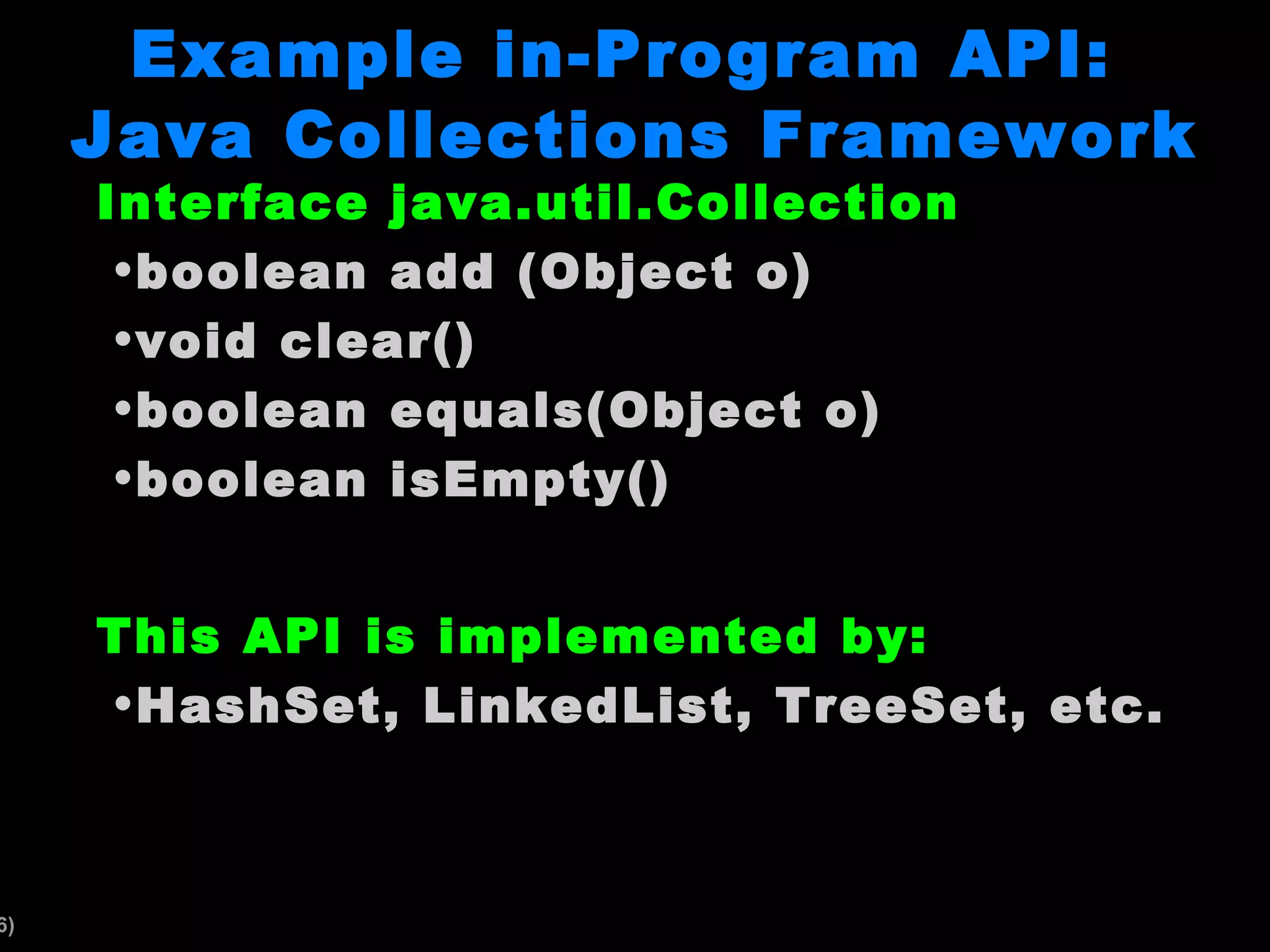
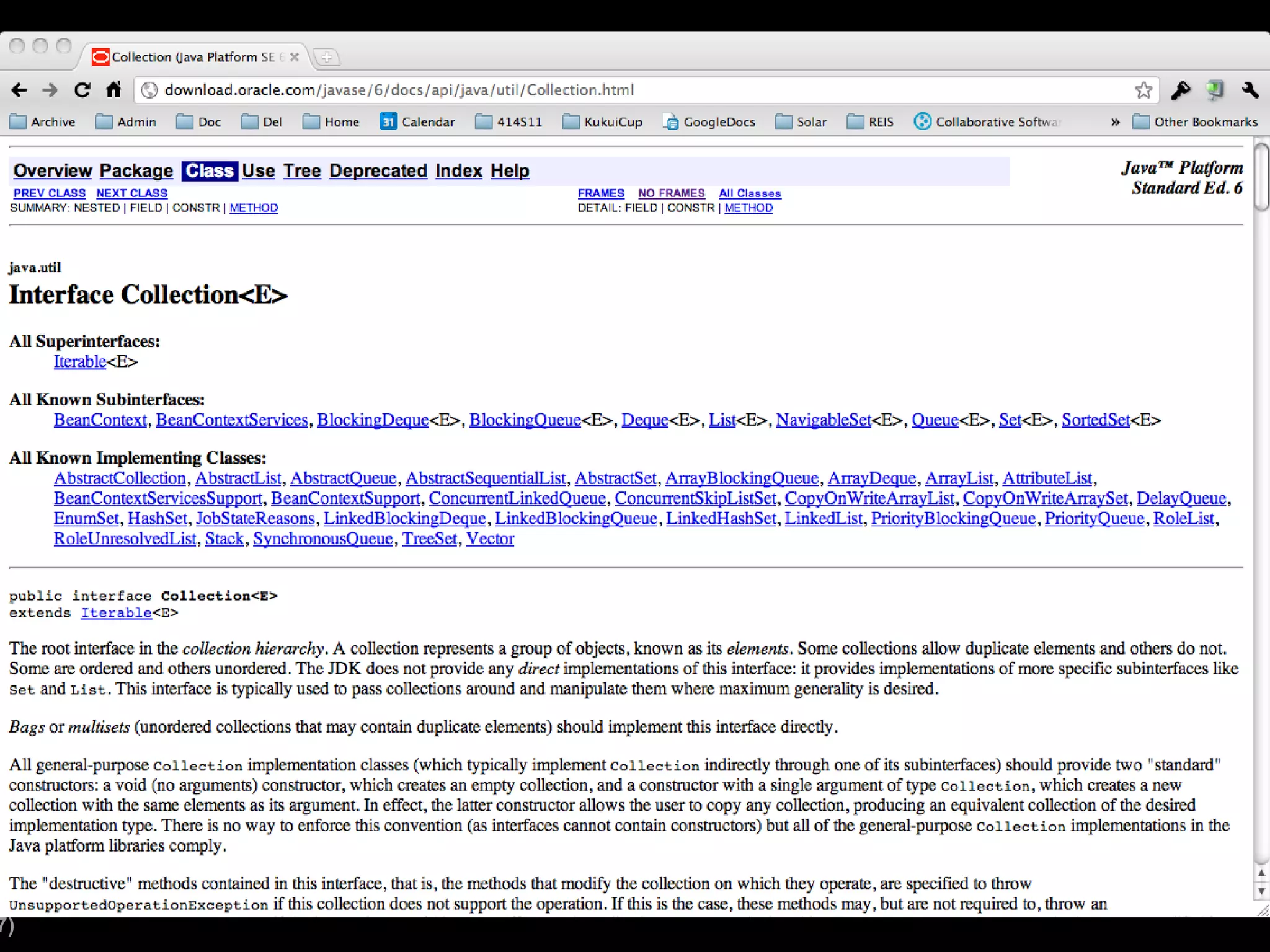
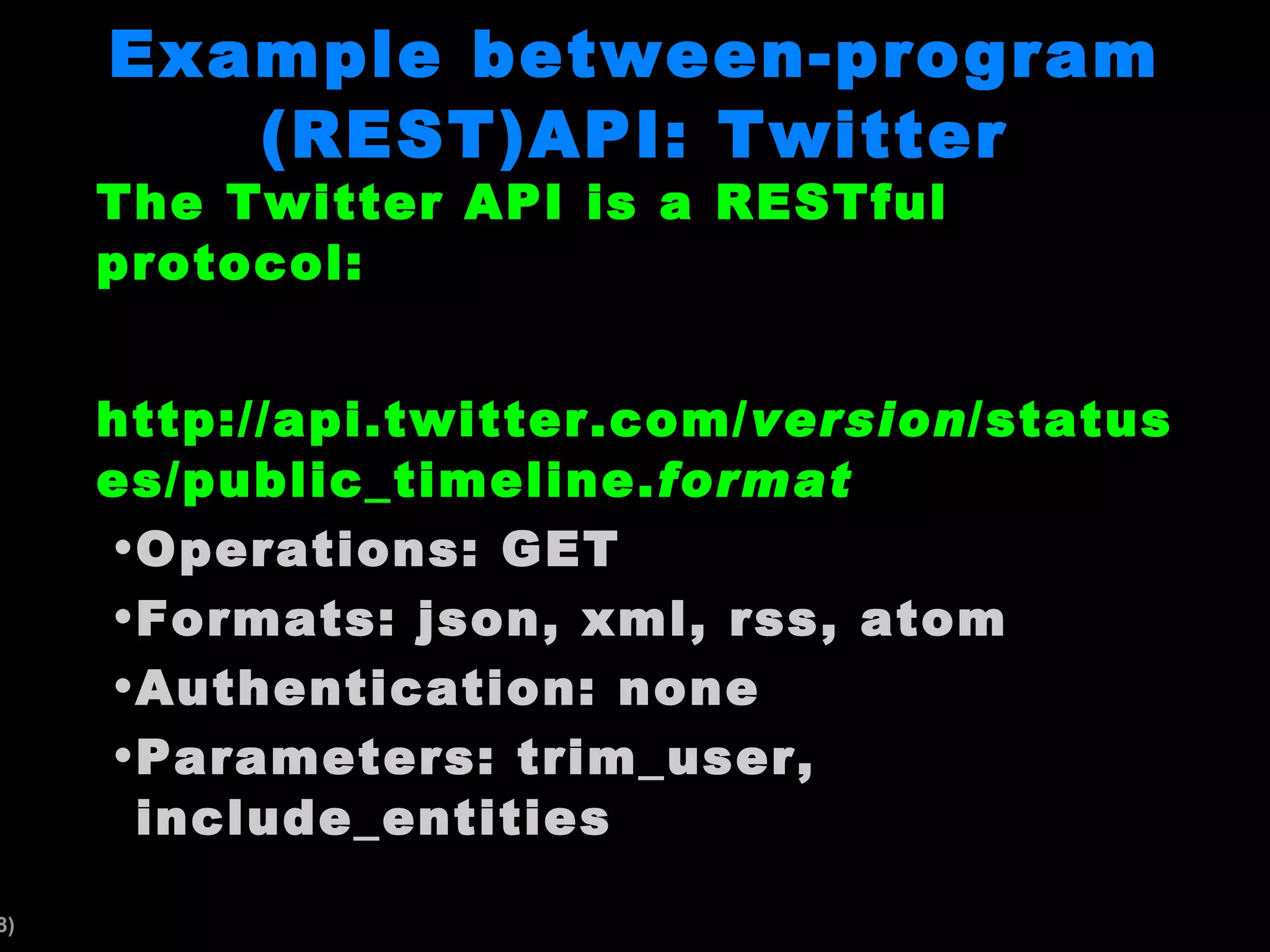
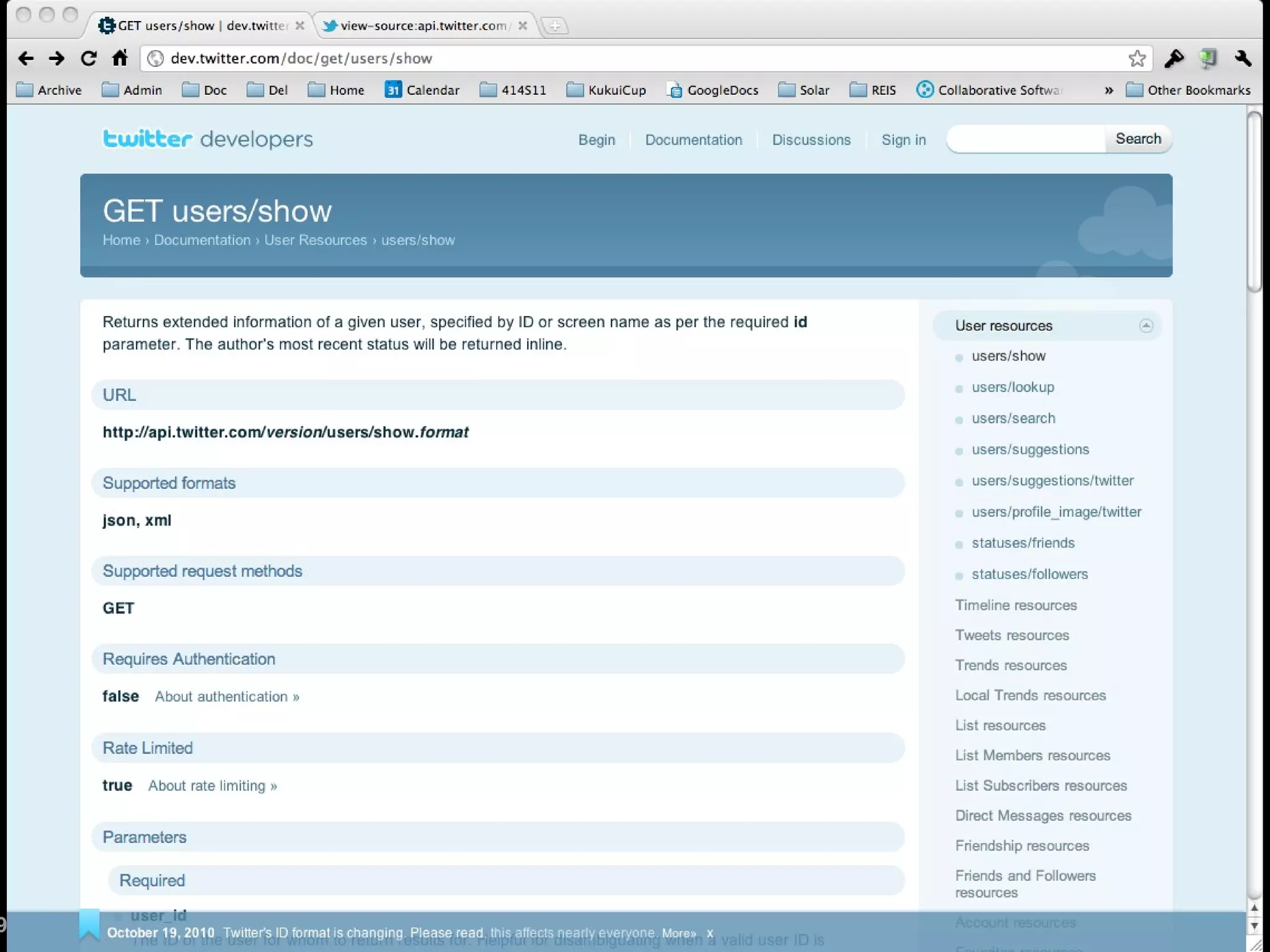
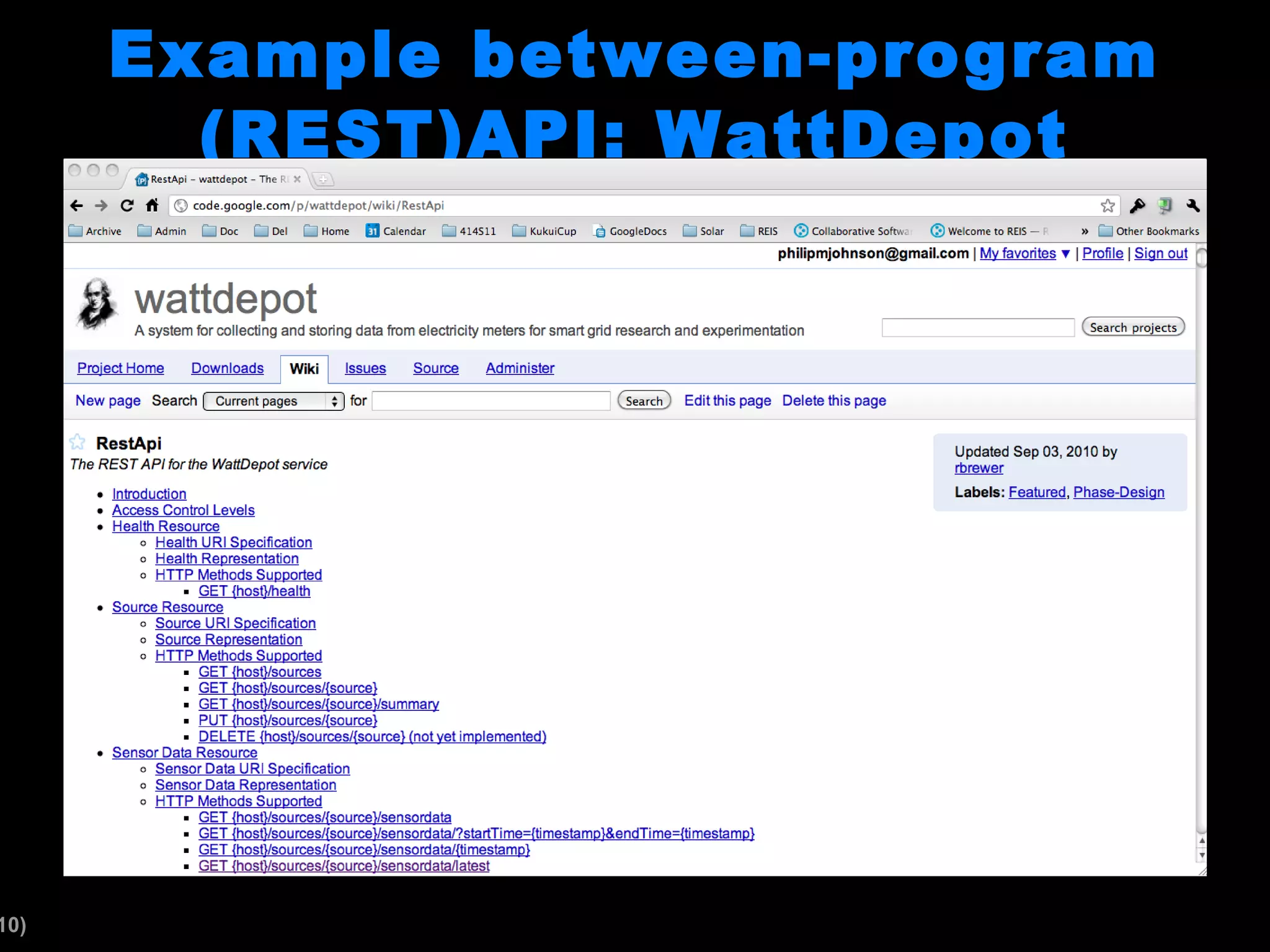
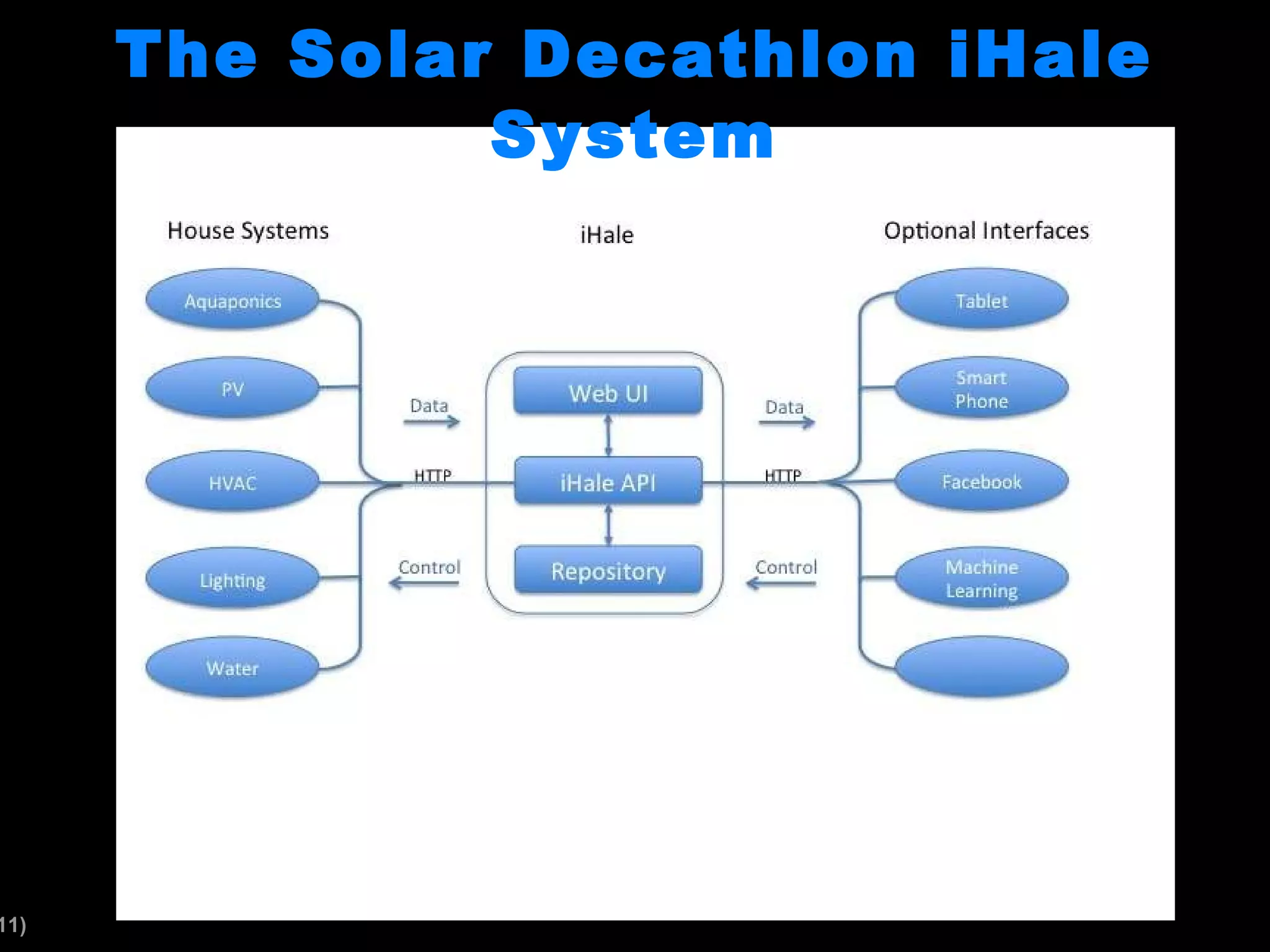
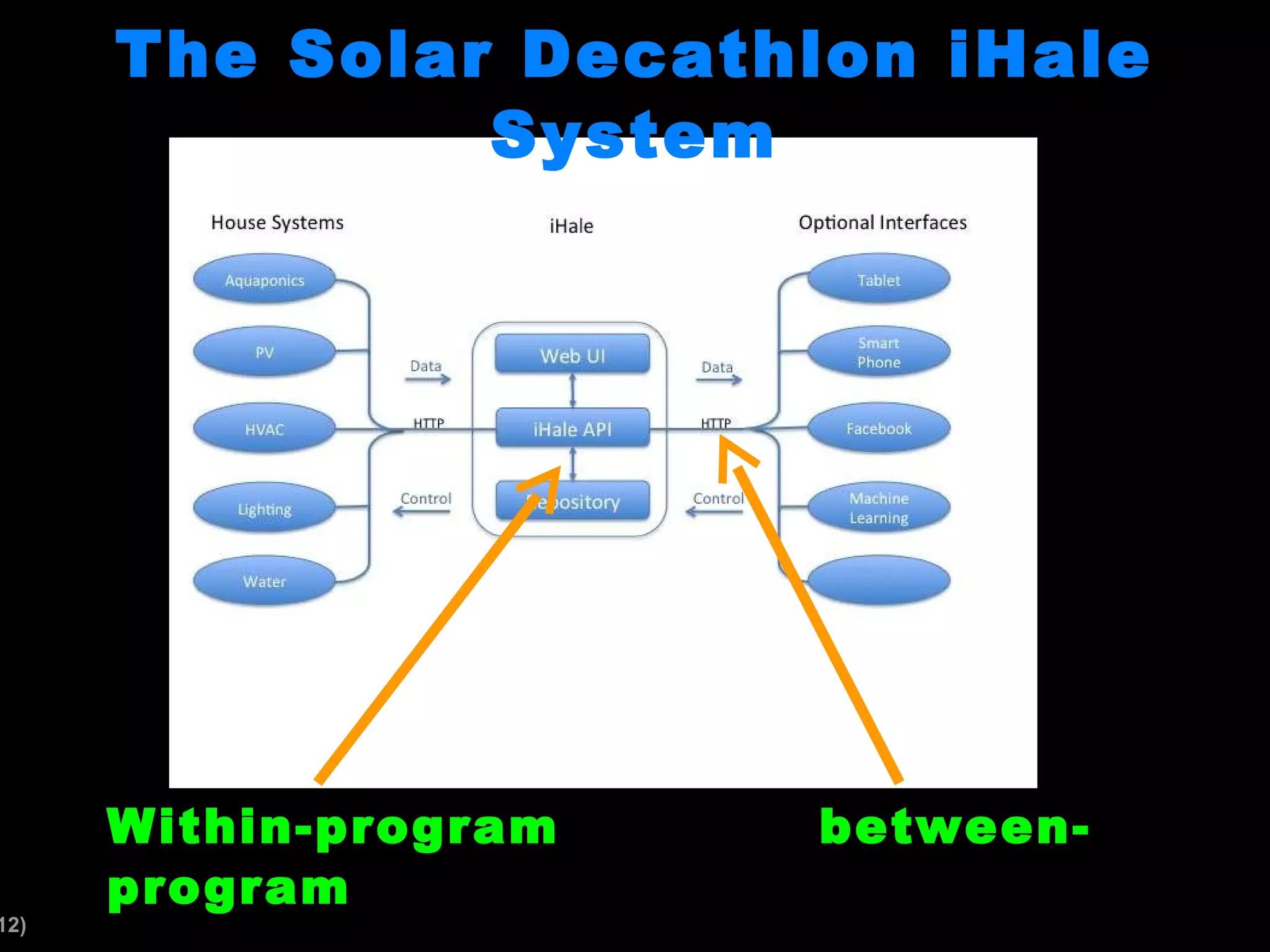

This document provides an introduction to APIs, discussing what they are, their advantages and disadvantages, and examples of different types of APIs. APIs specify the boundary and communication between two systems, defining the functions and objects that can be passed. APIs can exist within a single program or between independent programs. They simplify design, enable change without affecting the entire system, and allow for scaling and concurrent development. However, APIs also increase complexity and can make some changes more difficult. Examples provided include the Java Collections Framework interface and the Twitter REST API.












